Perhaps, there is hardly something more annoying and frustrating than finding out that your hair develops white lint almost right after you wash the mane!
Quite many of us face this problem and people want to know how to get rid of dust in hair easily and quickly.
In this article, you will finally find all the answers. We are going to tell you why lint and dust settle on your tresses, what can be done to it to keep your hair clean and dust-free, and also, you will find out what you can do in order to prevent lint and dust from getting stuck to your mane.
Why is There Lint In My Hair?
Have you ever found white lint in your hair? If you have, then you know how annoying it can be! You wash your hair thoroughly, but the next day or the day after the wash you can already see that white residue on your strands.
No wonder you might want to do your best to find out why it happens.
You might have lint in your hair because of a number of different reasons. The main reason why you see lint and/or dust in your hair is that dust, oil, and fabric particles break down and get stuck in your hair.
However, that’s not the only reason. In general, we can name several most common reasons for lint and/or dust development in your hair:
- Dust
- Oil residue
- Particles of fabric
- Hair type
- Broken ends of our hair
- Hair poducts
Now we suggest you learn a bit more about each of these factors so that you have a better understanding of them in detail.
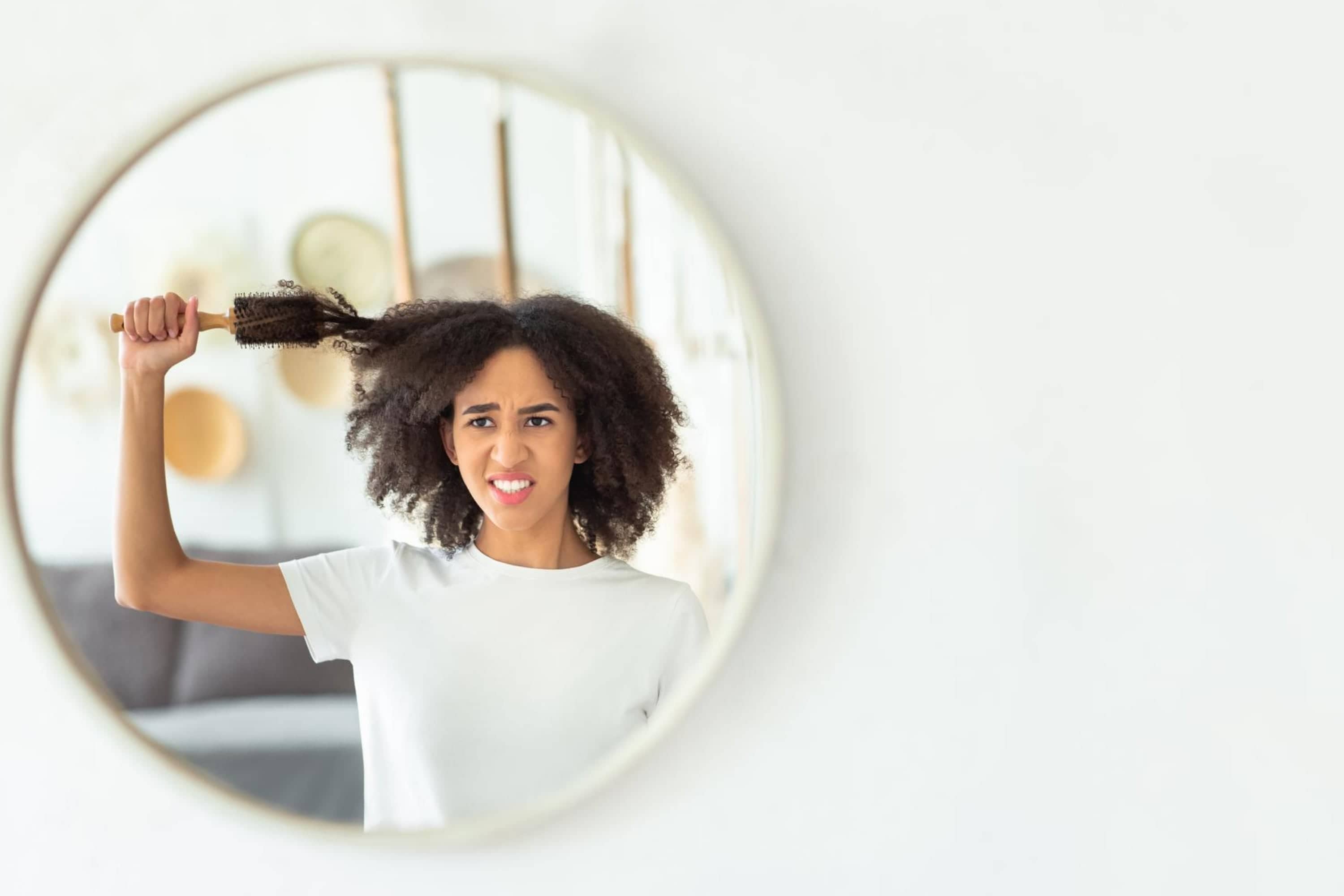
Dusty Environemnt
These particles of white or gray color usually get stuck to your tresses when your hair is exposed to dirty air and environment, for instance, if you live or stay in a polluted area for a long time.
Those who live or work close to factories or plants, as well as other industrial objects, may often have this problem. People who live close to the highways, railways, or very busy roads may also suffer from hair lint, by the way!
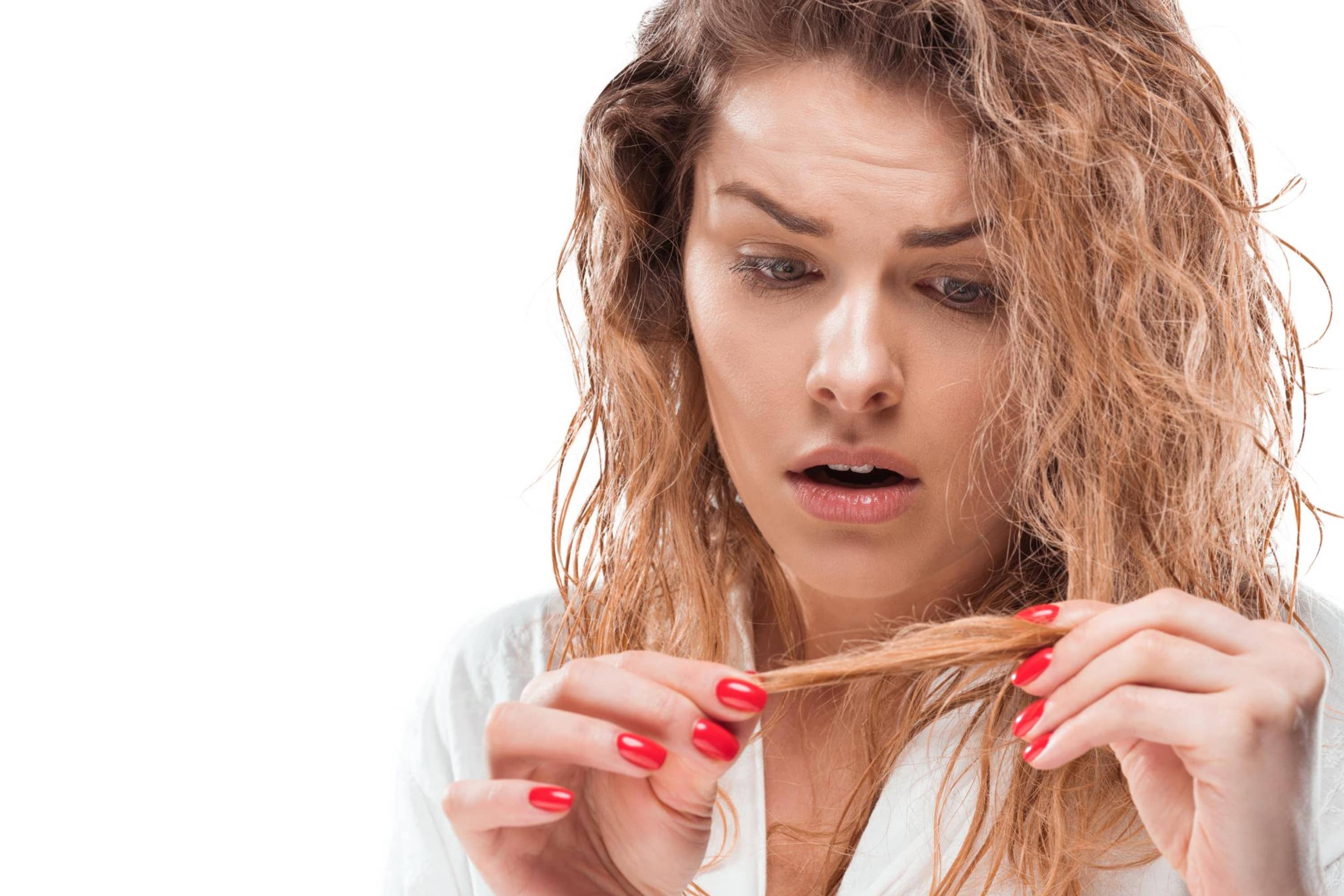
Oily Residue
There are surprisingly many people who believe that the more oil you apply to your hair the healthier your chevelure will be. However, they usually skip one important nuance! If you go out with oil applied to your mane, the oily residue on the strands will attract all the dust and debris around you!
This is why, if you use hair oils, consider the amount you apply, as well as the frequency of the product use. And also, remember to let the oil absorb completely before you go outdoors!
Fabrics and Static Attraction
Also, hair lint and dust can develop when you lie down on a certain type of fabric or naturally throughout the day from the environment. And let’s not forget about your own sebum production and other fabrics that come into contact with your hair throughout the day!
Static attraction, which can appear due to the friction against the fabric, also matters since it can attract external materials very quickly.
This is one of the most frequent reasons why you can end up with your hair being full of particles of cloth that come from your pillows, blankets, or daily garments. Cloth debris is one of the main contributing factors toward lint formation in the hair.

Your Hair Type
As you can see, dust, static attraction, fabrics, and polluted air are all external factors. But the key factor that makes you susceptible to lint on your strands is your hair type.
If you are the owner of curly or wavy tresses, be ready that you will more likely have lint in your hair than someone with straight hair.
You might say that it’s not fair, but this is how your hair type works! Since the hairs in wavy and curly hair are tangled and there is an abundance of conditioner residue and sebum in the hair, they are very susceptible to lint and dust residue.
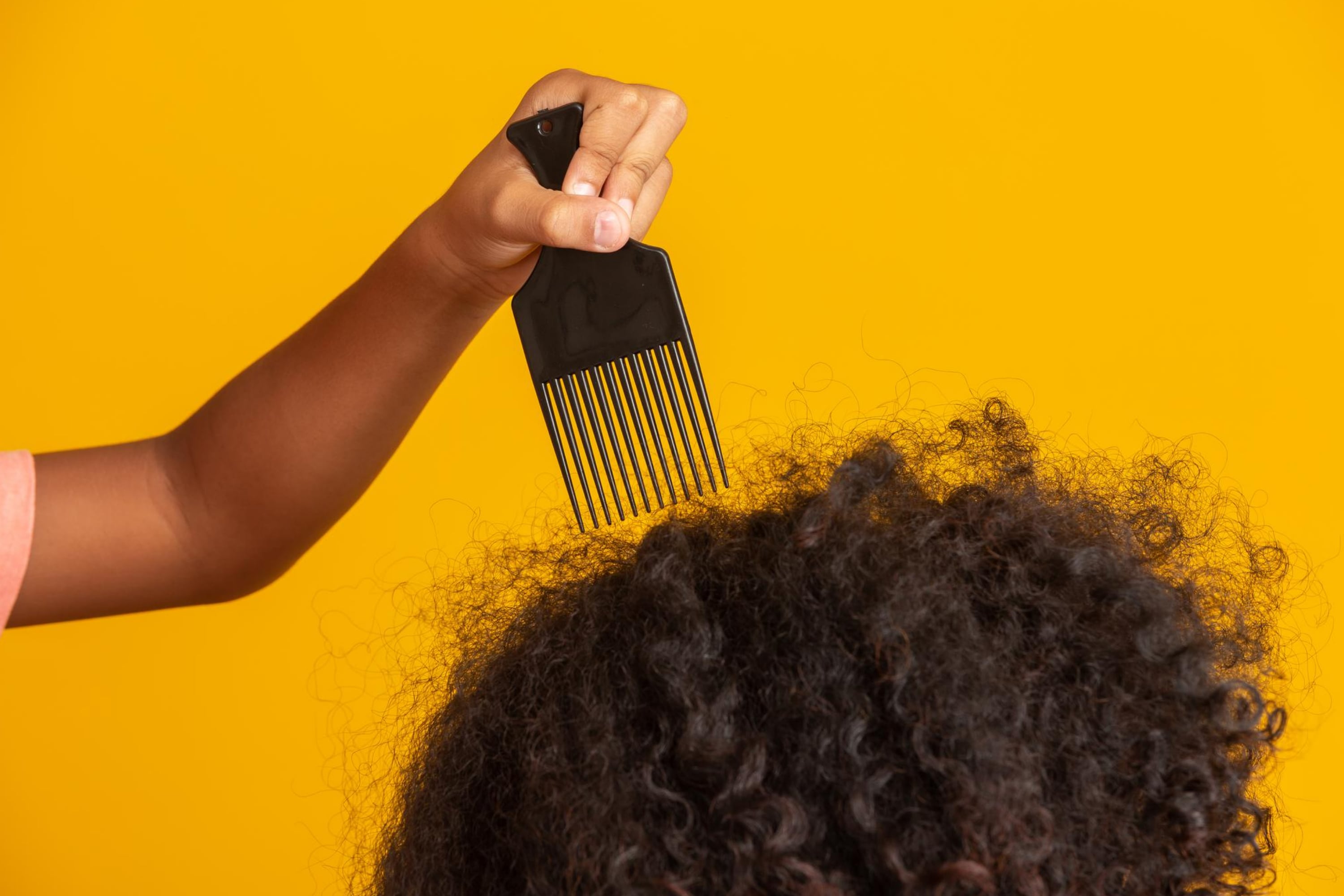
Broken Ends Of the Strands
Another major reason for the development of lint in our hair is the broken ends of the strands. These split ends can cause lint to attach to them and get stuck. It will make your hair fuzzier and can also give you an itchy scalp.

Your Shampoo And Conditioner
Your hair care products can also cause the development of lint! By not rinsing shampoo and conditioner out from your hair properly, you make your hair more attractive for lint and dust particles.
As a result, shampoo left on your scalp will not only cause dry and itchy scalp, leading to flakes, but it will also attract dust and lint.
It’s all the same with the hair conditioner. Hair conditioners need to be left in the hair for a required amount of time in order to work. But if you don’t wash it out properly, it could lead to the product’s residue left behind, which will act as a trap and hold dust and debris onto the scalp and the hair.
Finally, we would like to mention one nuance that people rarely think about as a cause of lint in their hair. See, you probably noticed that quite many people have a habit of running their hands through their hair.
However, this habit is not harmless! First of all, doing so makes your hair prone to breakage. In addition, our hands carry dust particles and other forms of micromaterial. When running your hands through the hair regularly, you pass those particles onto your strands by touching your fingers through your hair.
Like that, you are now aware of a bunch of reasons that may lead to dust and lint development in your hair. But what is this lint in fact? Below, you can find more details on that subject.

What Is Lint?
Everyone has seen lint at least once, but do all of us know what it actually is?
Well, everything is very easy here. You definitely know that dust, debris, and other particles in the environment combine and can get attached to your scalp, hair, or roots. This combination of particles is what we call lint.
Lint may take different forms. Sometimes, it looks like a very fine powder, and sometimes it presents itself in the form of a substance that resembles wool or a cotton thread-like material.
You can often find it in between the teeth of your hair comb or hairbrush, by the way! And this is why it is important to remove lint from these tools, otherwise, it will be transferred to your hair.
Where Does Lint Come From?
Lint has a superpower of appearing literally from nowhere! You had absolutely clean hair yesterday, and boom – today you can already see that white residue on the strands. How did it happen?
Our hair carries naturally producing oil and sebum within them. That oil and sebum act as adhesives for lint, allowing it to get stuck on the scalp.
Where do they come from?
Scalp sebum is an oily substance that is produced by the skin of your head. It helps keep your scalp properly moisturized, but also, it is the reason why your strands become greasy between washes. Though your scalp sebum might also make your chevelure look darker and give it a greasy look, it is needed for doing an important job of protecting hair follicles and the entire scalp.
By the way, certain hair types are more susceptible to lint!
For example, people with curly or dry hair tend to face lint problems more frequently than the owners of straight tresses. Respectively, if you have dry hair, it will be way more susceptible to friction damage because of the lack of moisture.
In either case, your hair becomes some kind of a magnet for dust, lint, and other environmental debris that gets stuck to the tresses. And if you have too much dust and debris in your hair, they will sooner or later result in lint forming on your head if you do nothing to it.
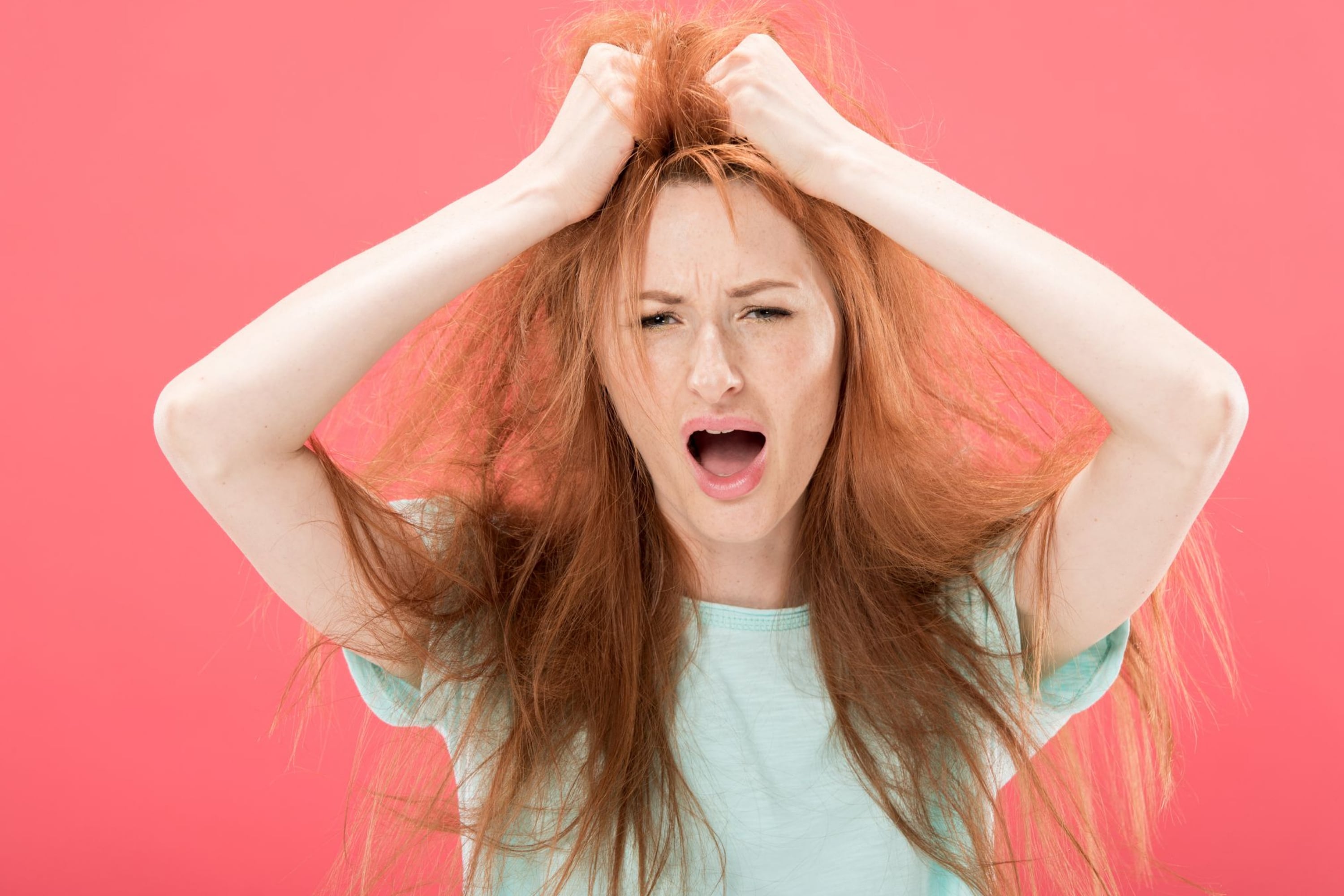
How to Prevent Lint In Hair?
Since now you know what leads to the development of dust and lint in your hair, you might be wondering how they can be removed from it. There are several methods that you can use if you want to get rid of lint in your hair.
However, note that they should be used in a complex since in this case, you will get much better results than when using only one approach.
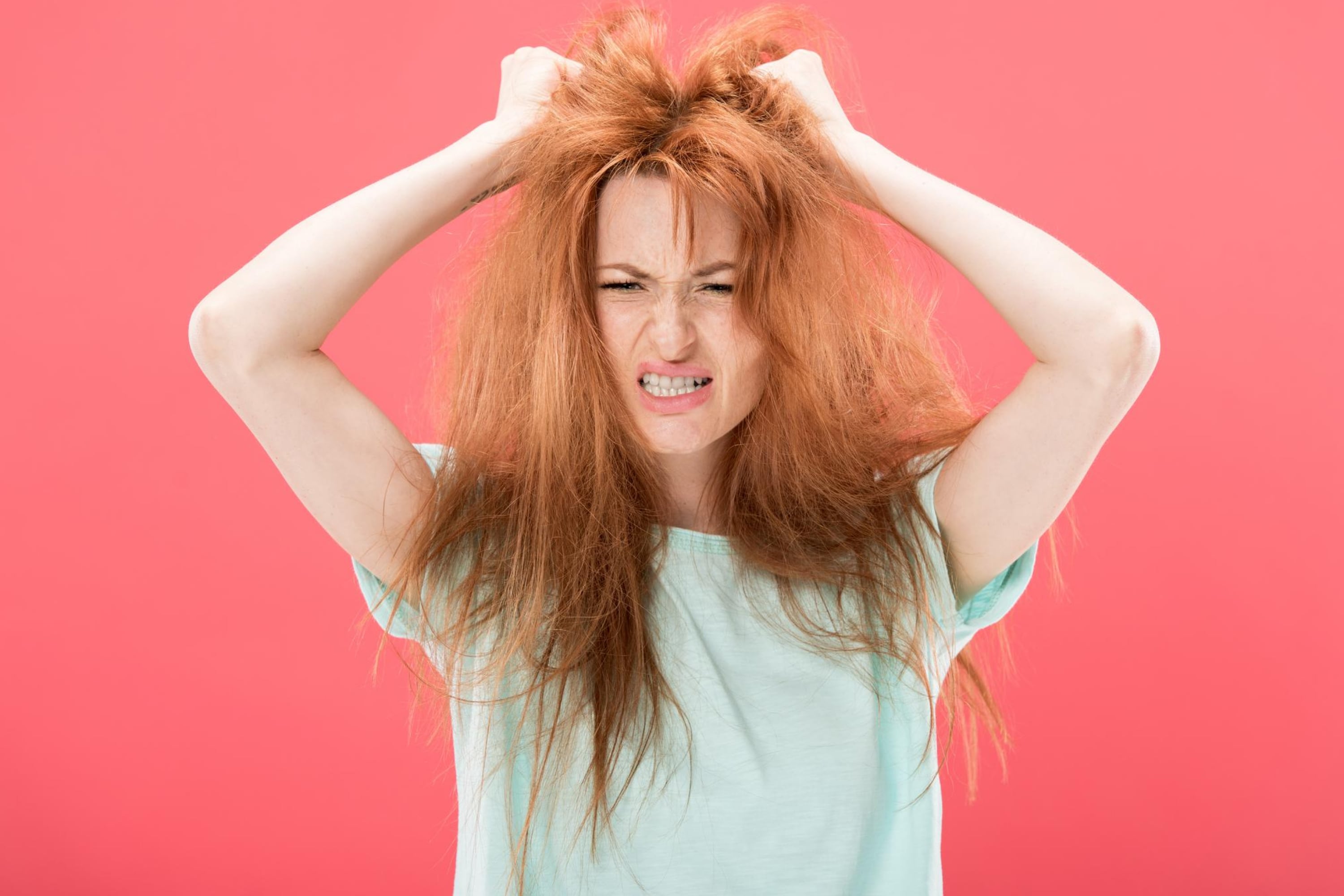
Clean Your Brushes And Combs
You definitely know that lint and dust tend to accumulate in the bristles of your hair brushes and combs! Removing these particles from your brush regularly can help a lot in keeping lint and dust away from your hair every time you brush it.

Sleep With a Hair Cap
This advice may sound strange and awkward to some of you, but it really works! Sleeping with a hair cap on is one of the most efficient ways of keeping lint and dust as far from your mane as possible. Doing this will help stop the fabric materials from ending up stuck in your hair.
As an option, you can try changing the type of pillows and bedding you sleep on. For instance, cotton pillowcases and sheets are notorious for shedding fabric particles into your hair. In fact, the same as cotton clothes do.
So avoiding wearing these materials often will stop clothing fabrics from getting stuck in your hair. Instead, you can wear silk or satin materials which are much better for your hair.
Wash Your Hair Thoroughly
Washing your hair regularly is helpful for keeping it clean, but after each wash, make sure that you remove all the shampoo and conditioner residue from your scalp and the roots of your hair!
If you don’t rinse your hair thoroughly, it can lead to dandruff and lint on your scalp, as well as greasy hair full of sebum oils.

Avoid Using Hair Products Too Often
This means you should try not to spray your hair with hair spray or apply other hair styling products to it frequently. Hair sprays cause grease, oil, and other chemicals to build up in your hair. You could also consider using one of the hair care products designed for reducing lint in your hair.
Now you know why lint keeps getting stuck to your hair and what should be done in order to get rid of it once and for all. As you know now, lint can be caused by both external and internal factors.
External ones include polluted and dusty air, excess hair products, lint from your hair brush, or even a habit of running your hands through the hair! As for the internal factors, they are the sebum buildup in your hair, the split ends, and others.
With all the information we have shared with you on the subject, you will now be able to deal with linty hair more efficiently since you know what causes lint and how it can be removed. And with the help of a few tips that we shared with you, you will easily avoid lint in the future.
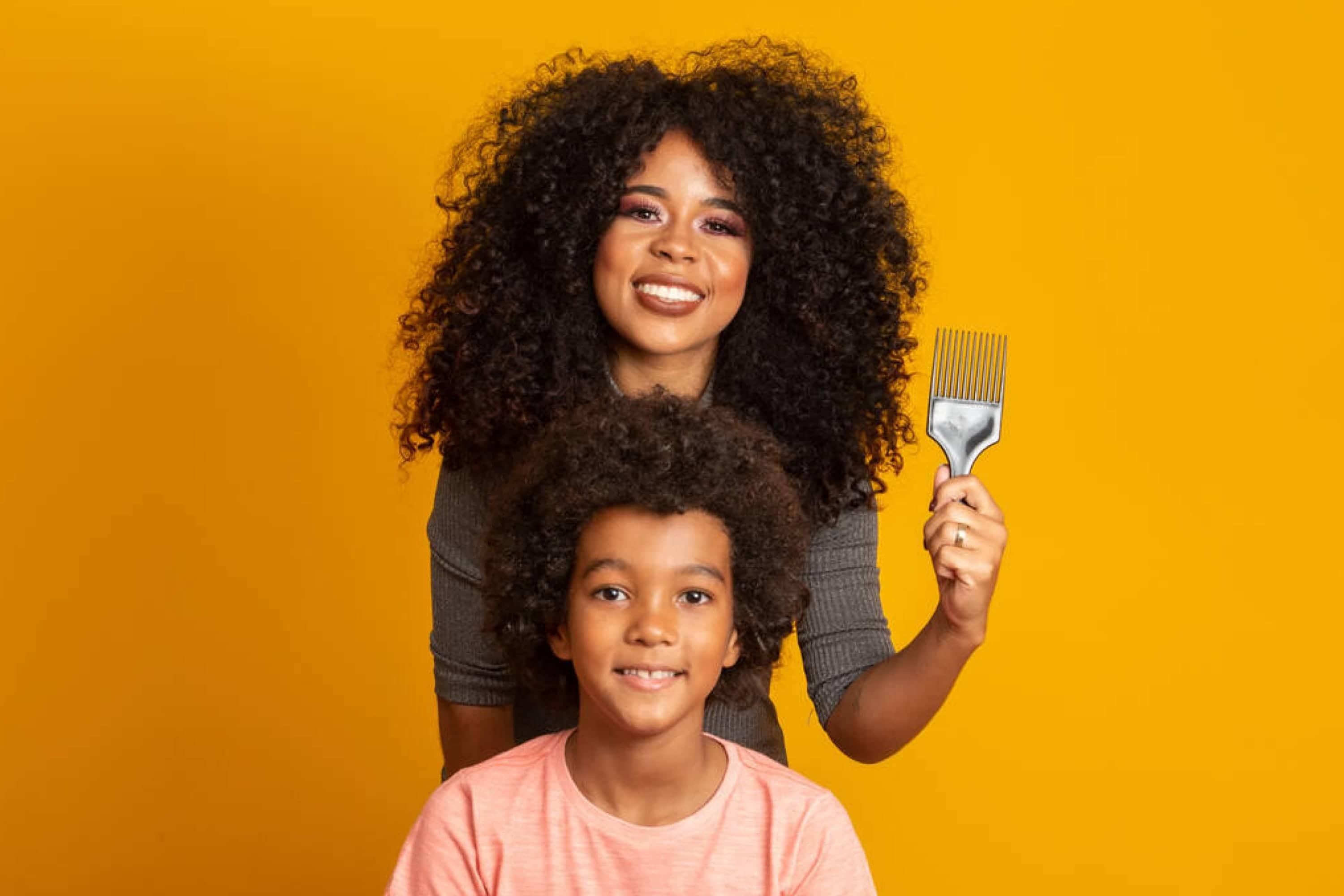
[wp-faq-schema title=”Frequently Asked Questions”]

How does lint affect your hair? I noticed that, after we moved to the new apartment, my hair started attracting lint harder, and the scalp is itchy now. Can lint cause any damage to the hair as well?
Well, lint doesn’t affect our hair as badly as dandruff or lice do. However, it does cause an itchy scalp (which you already have). At certain times, excessive scratching can lead to injuries on the scalp, so you should take care of that!
On curly and dry hair, lint becomes very apparent to the naked eye, which may not look good on the hair. Hence, it is important to take care of your hair and avoid anything that might make them more prone to lint formation.
Can anyone tell me what colour hair lint is? I have noticed some white fluffy stuff on my hair a few times, but I’m not sure what that was.
Lint in your can appear in lots of different colours. If cotton, wool and clothing fabric particles build up in your hair they can appear the same colours as the fabrics. I most often find the lint in my hair and the lint I clean from my hairbrush is coloured grey or white and mostly made up of hair and skin particles, sebum and dust. Sometimes colourful pieces of cotton thread get caught in my hair and small pieces of wool fluff.
I’ve been noticing some dust in my hairbrush lately. Can anyone explain why there would be dust in my hairbrush, even though I clean it regularly?
If you are finding dust in your hairbrush, it could be due to a number of reasons. It may be coming from the environment such as airborne dust settling on your brush, particularly if you leave your brush out in the open. Alternatively, it could be a combination of product buildup, dead skin cells, and hair oils which may appear as “dust”. Regular cleaning of your brush and storing it in a clean, enclosed space could help to reduce this.
I seem to have dust in my hair more often than not. What are some effective ways to get rid of dust in my hair?
Regular shampooing and conditioning will help remove dust from your hair. Brushing your hair regularly can also help, but be sure to clean your brush afterward to avoid reintroducing the dust. If you’re in a dusty environment, consider wearing a hat or headscarf to protect your hair.
Is there a way to remove dust from my hair without washing it? Sometimes I just don’t have the time for a full wash and dry.